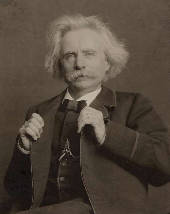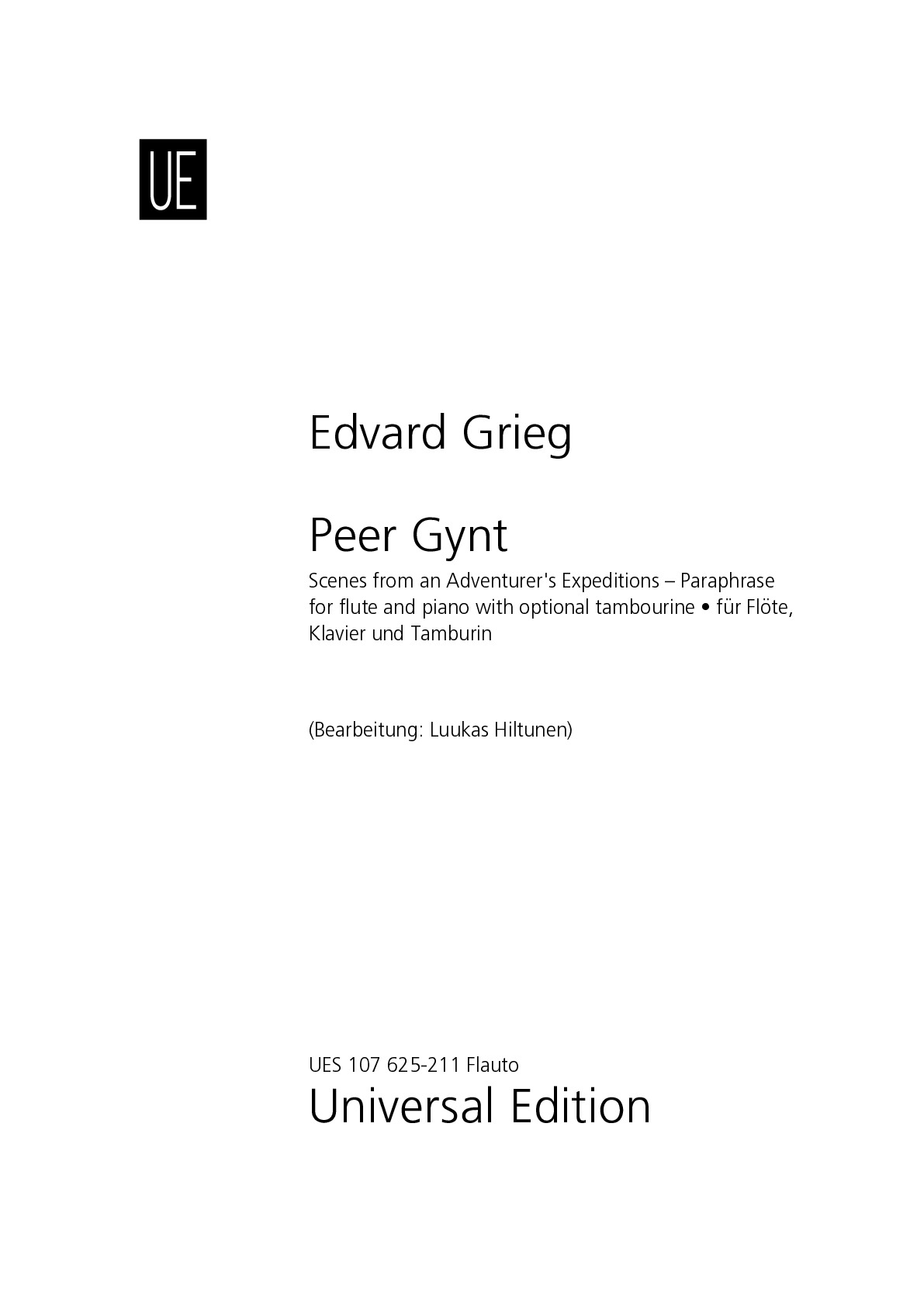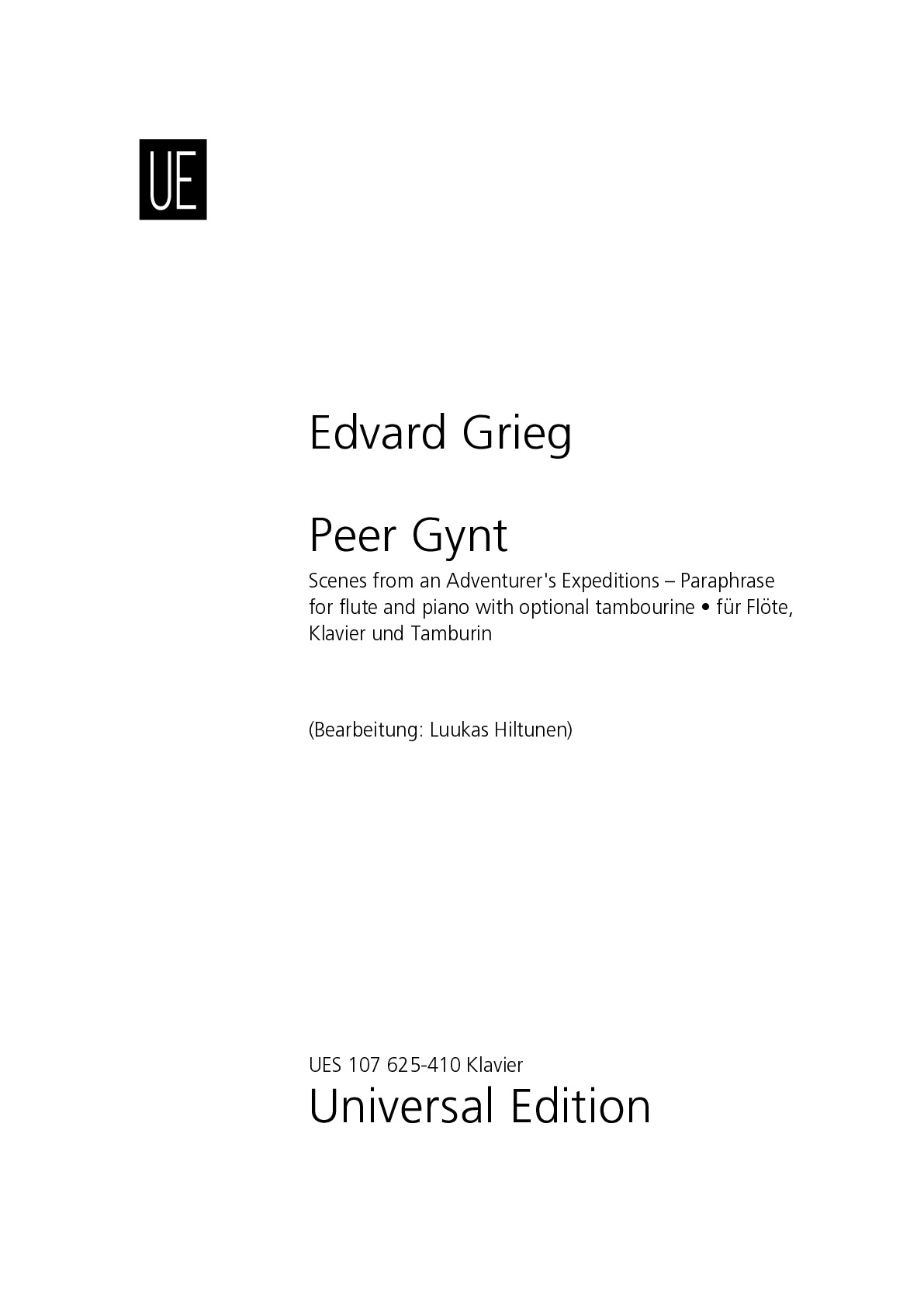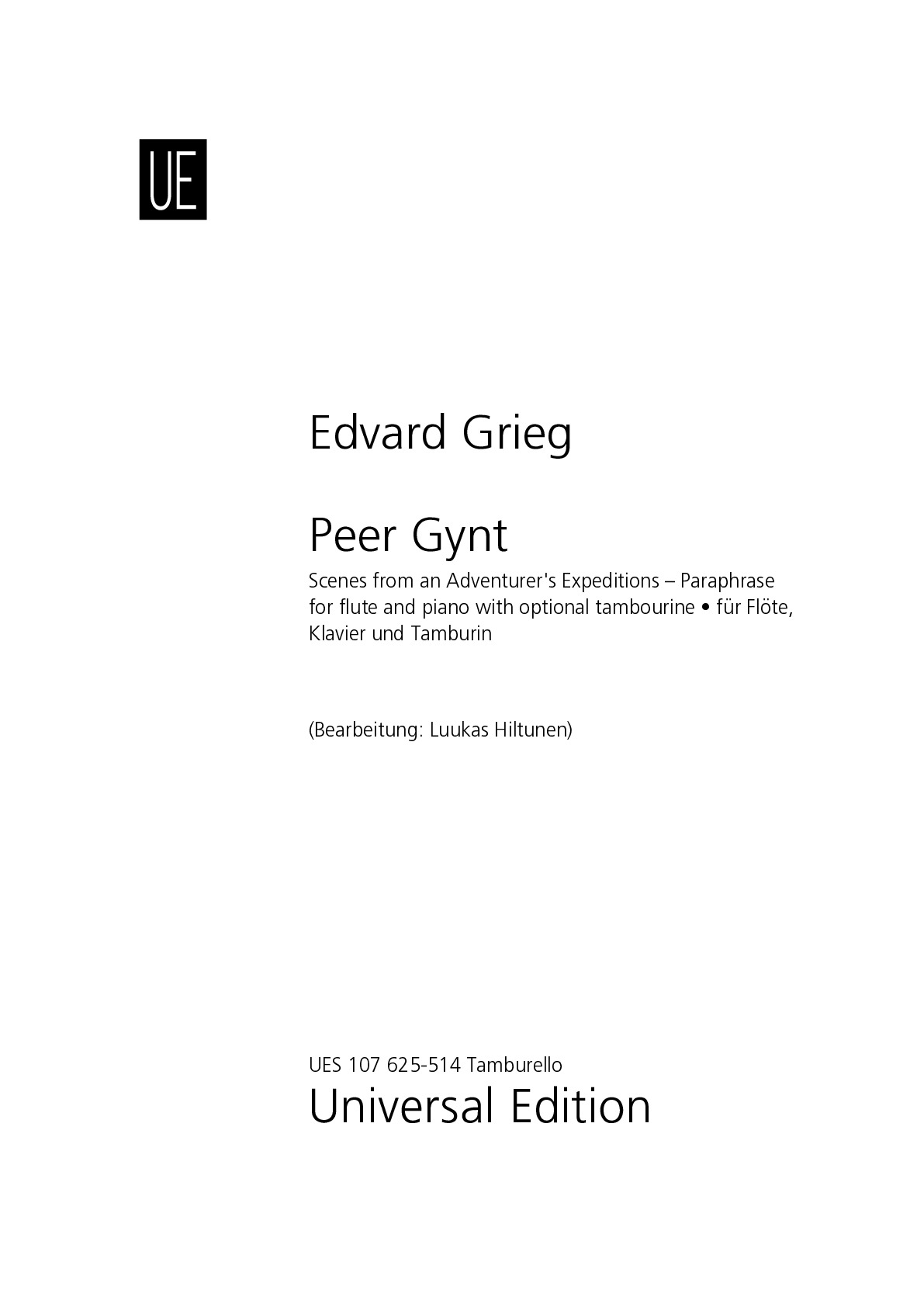

Edvard Grieg
Peer Gynt
Duration: 14'
Bearbeitet von: Luukas Hiltunen
Instrumentation details:
flute
tambourine
piano
Peer Gynt
Sample pages
Work introduction
Now in hand is a paraphrase for flute and piano with an optional tambourine of Edvard Grieg's (1843–1907) incidental music Peer Gynt (Op. 23, 1875), prepared by our composer Luukas Hiltunen; a fascinating look at the two distinctly different female characters in the play – the Daughter of the Mountain King, who has disguised herself previously as a woman dressed in all green and Solveig, the mistress of the hooligan Peer Gynt, a vibrant adventurer. This dramaturgical structure was actually only revealed after the work was finished and sealed the project as the most legitimate – instead of the musical narrative focusing on the protagonist, Peer Gynt, the angle of approach is in the main female characters, with the exception of Ingrid, the daughter of the Haestad landlord, whose attempted abduction Peer fails and is forced to run away, leading further to an encounter with the Daughter of the Mountain King, with Peer Gynt as the unifying element in the background.
More important than the characters in Ibsen's play [in terms of the structure of the paraphrase] was Grieg's music, particularly the lesser-known numbers that are not performed outside the context of the incidental music. The opening scene of the paraphrase, Peer Gynt and the Woman in Green, was omitted from the first published edition of the incidental music (1908) and was only included in the Urtex edition, published eighty years later in 1988, edited by the Norwegian musicologist Finn Benestad (1929–2012). This, as well as the Shipwreck scene incorporated into the paraphrase, albeit abbreviated and amended, has been preserved, after Grieg's passing on September the 4th 1907, in the Grieg Archives at the Bergen Public Library as part of the manuscript material, donated by Grieg the previous year 1906, among his other written papers. Solveig's Song was integrated due to its familiarity, personal significance and structural alignment – when the Song is performed in the middle of the paraphrase, framed by the fast-paced Dance of the Mountain King's Daughter and the Shipwreck scene, it operates as a dramaturgical and musical watershed, as the
tranquil and dreamlike Solveig's Lullaby draws the paraphrase to a fitting conclusion.
What is necessary to perform this work?
Note regarding the optional tambourine part: The tambourine, if implemented, should be placed at a distance apart from the flutist and pianist, at the edge of the stage, to evoke the impression of a troll playing the instrument in the hall of the Mountain King.



